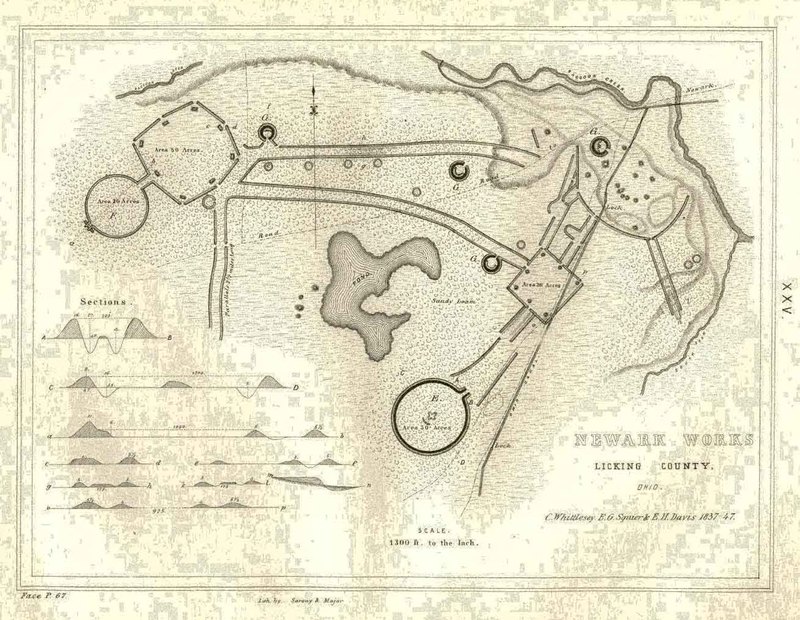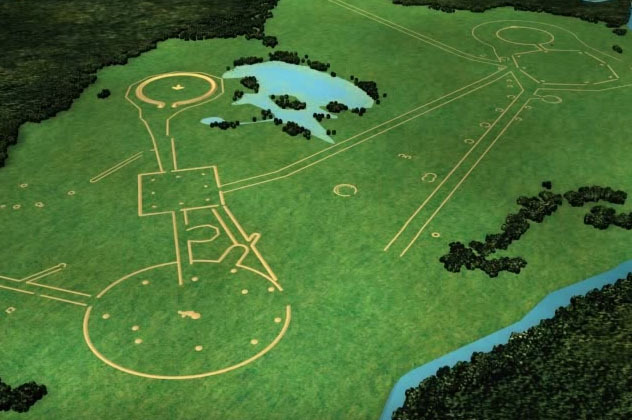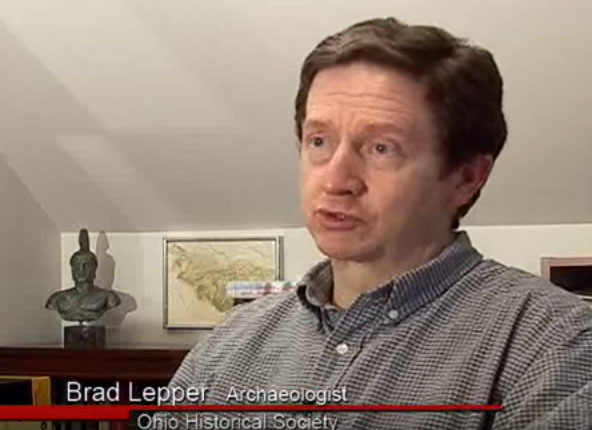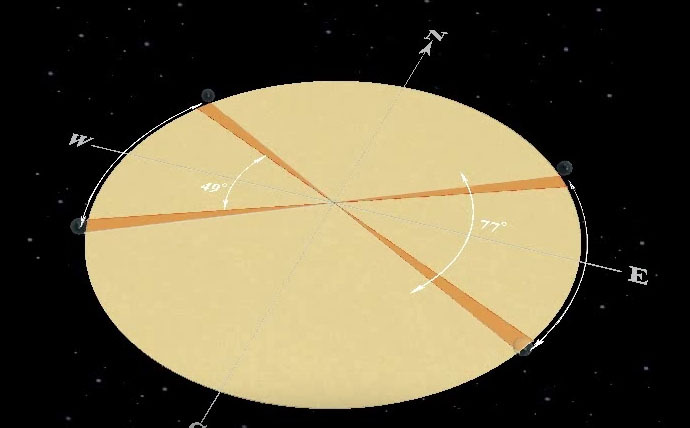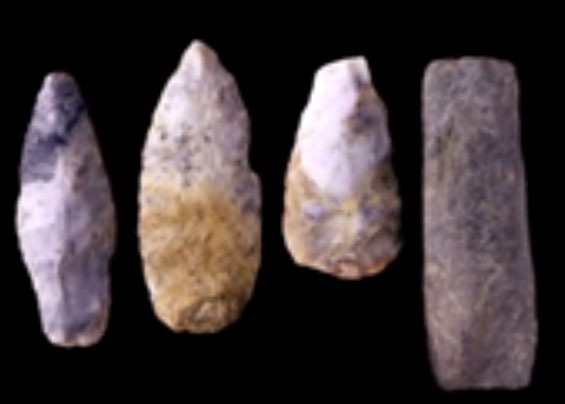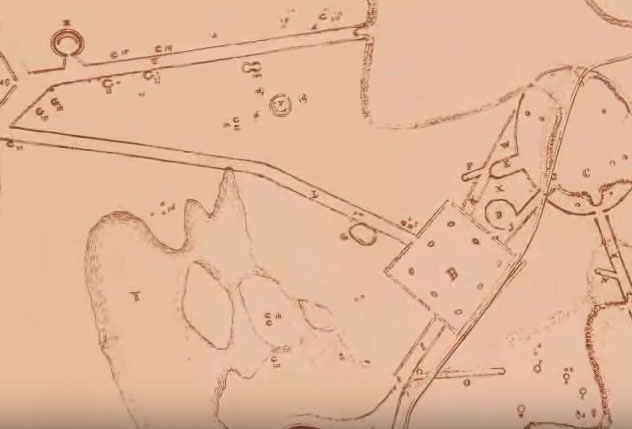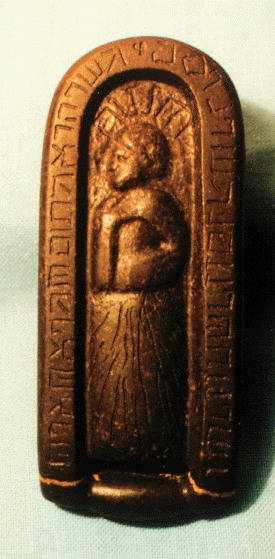Newark Mound
The Newark Earthworks complex, built by the Hopewell culture, was formed over a span of c. 300 years. Its construction took almost three million man-hours to move seven million cubic feet of dirt and clay. The resulting scale dwarfs many famous ancient sites: only a small fraction of the earthworks, the square, octagon, and small circular enclosure, would hold the Great Pyramid, Stonehenge, and the equivalent of four Roman Colosseums.
The precision with which each geometric shape was formed was typical of the Hopewell method of construction. For example, the circle which is connected to the octagon at Newark is 1,050 ft. in diameter. Ray Hively and Roger Horn have demonstrated that the distance between Newark’s two largest circles and between the centers of its octagon and square are both precisely six times the diameter of the first circle. William Romain has taken this measurement and discovered its exact counterpoint in twenty-four other Hopewell sites.
The Hopewell built the Newark earthworks so that part of them aligned with various moonrise points during a precise 18.6 year lunar cycle. The octagon in particular was built to align four of its walls with the lunar extreme rise and set points.
The incredible scale of the earthworks captivated early scholars. In 1848, a local newspaper wrote that: “in entering the ancient avenue for the first time, the visitor does not fail to experience a sensation of awe, such as he might feel in passing the portals of an Egyptian temple.”
